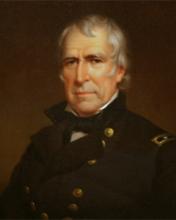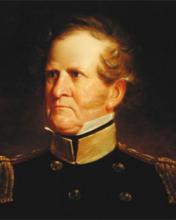After the fall of Matamoros, Taylor established his base of operations at Camargo, a village below the Rio Grande. In June and July 1846, volunteer regiments that had been formed in response to the declaration of war began to arrive, swelling the size of the Army of Occupation to more than 10,000. The volunteer regiments’ failure to take adequate sanitation precautions soon turned the camp into a quagmire of filth and disease, made all the more unbearable by blistering heat. While the troops suffered from a variety of diseases, dysentery proved the most fatal. By the end of August, 1,500 troops, a staggering 12 per cent of Taylor’s force, had died of dysentery and other diseases.
In September, Taylor moved south, engaging the Mexican Army of the North at Monterrey in a three-day battle for Mexico’s largest northern city. By mid-November, frustrated that the Mexican government would not sue for peace, the Polk administration decided to open a southern campaign, placing General Winfield Scott in command. Arriving on the Rio Grande in January, 1846, Scott ordered Taylor to send him the bulk of his force in preparation for the invasion of Vera Cruz. The Army of Occupation was to assume a defensive position in northern Mexico.
Convinced that he was now being deprived of any further military glory, Taylor refused to be relegated to the secondary role assigned to him. With his diminished force he decided to move south to Saltillo, and ordered General Wool’s Center Division, which was planning to march to Chihuahua, to reinforce him. Taylor would not abandon his advanced position even when Scott explicitly ordered him to do so. On February 22-23, 1847, Santa Anna unsuccessfully attempted to dislodge the Army of Occupation at the Battle of Buena Vista/La Angostura. Taylor’s troops would remain in control of northern Mexico for the duration of the war.







